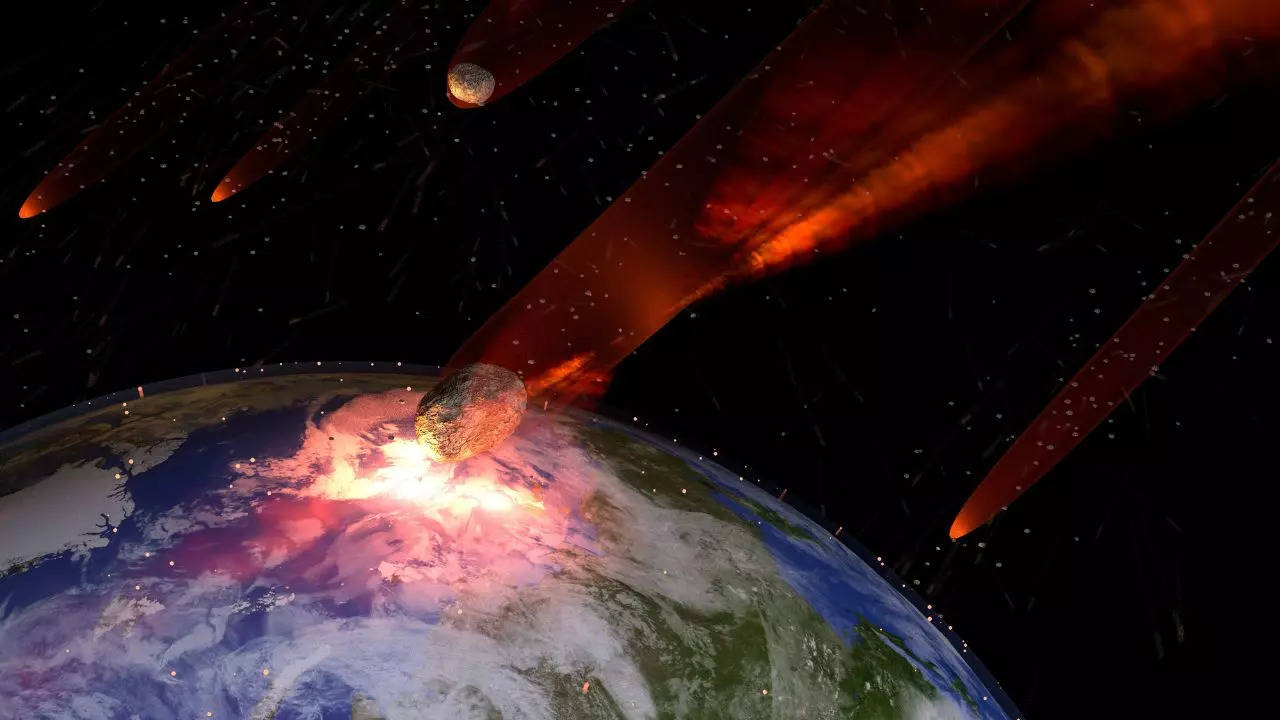A small asteroid, approximately 70 centimeters in diameter, is on a collision course with Earth and is expected to enter the atmosphere over northern Siberia tonight at around 9:45 PM IST. While the term “collision course” may sound alarming, experts assure that the asteroid poses no threat to life or property. Instead, its entry will result in a harmless but spectacular fireball as it burns up in the atmosphere.

The Asteroid’s Journey: Tracking Its Collision Course
The asteroid was detected shortly before its predicted atmospheric entry, demonstrating significant advancements in tracking near-Earth objects (NEOs). Such detections are crucial for monitoring the trajectories of celestial bodies that pass close to Earth. Although this asteroid is too small to cause harm, its discovery highlights the importance of vigilance and preparedness in planetary defense.
Measuring just 70 cm in diameter, the asteroid is part of a category of smaller celestial objects that frequently enter Earth’s atmosphere. When these objects collide with the atmosphere, they typically disintegrate due to the intense heat generated by friction, creating a fireball visible to those on the ground.
What To Expect From Tonight’s Event?
As the asteroid approaches Earth, it will enter the atmosphere over northern Siberia, producing a bright flash visible to observers in the region. The event is expected to occur at 9:45 PM IST, with a possible variation of five minutes.
The intense heat generated during atmospheric entry will cause the asteroid to burn up completely, preventing it from reaching the surface. These fiery disintegrations, often referred to as “shooting stars” or “fireballs,” are a natural part of our planet’s interaction with space debris.
Why Small Asteroids Matter?
While tonight’s asteroid poses no risk, such events are reminders of the vast number of objects moving through our solar system. Many of these objects are too small to cause damage but are scientifically valuable.
- Understanding Near-Earth Objects:
Tracking small asteroids like this one helps scientists refine techniques for detecting larger, potentially hazardous asteroids. It also provides opportunities to study the composition and behavior of these objects. - Cosmic Fireworks:
Events like tonight’s fireball offer a glimpse into the dynamic and ever-changing nature of our solar system. For skywatchers in northern Siberia, this is a chance to witness a rare and mesmerizing celestial phenomenon.
Lessons From The Past: The Chelyabinsk Meteor
Tonight’s event may be harmless, but history reminds us of the potential dangers posed by larger asteroids. In 2013, the Chelyabinsk meteor exploded over Russia, releasing energy equivalent to approximately 500 kilotons of TNT.
This unexpected event injured over 1,500 people, damaged buildings, and underscored the importance of improving asteroid detection and response systems. The Chelyabinsk meteor was about 20 meters in diameter, significantly larger than tonight’s asteroid, and its explosion highlighted the potential risks of even moderately sized space rocks.

Advancing Planetary Defense
Space agencies such as NASA and the European Space Agency (ESA) are at the forefront of efforts to monitor and mitigate asteroid threats. Advancements in telescopes, radar systems, and tracking software have made it possible to detect smaller objects like tonight’s asteroid with increasing accuracy.
Efforts are also underway to develop deflection techniques for larger asteroids. Projects like NASA’s DART (Double Asteroid Redirection Test) are testing the feasibility of redirecting an asteroid’s trajectory to prevent potential impacts.
The Spectacle And Its Significance
For those fortunate enough to witness it, tonight’s event is a visual reminder of the incredible interactions between Earth and its cosmic surroundings. As the asteroid burns up, the resulting fireball will illuminate the sky over northern Siberia, showcasing the dynamic forces at play in the universe.
At the same time, this event underscores the importance of continued investments in space research and planetary defense. By understanding and monitoring the objects in our solar system, humanity can prepare for potential threats while appreciating the beauty of these natural phenomena.
Looking Ahead: Preparedness For The Unexpected
While small asteroids like tonight’s visitor are harmless, they highlight the need for ongoing vigilance. The skies hold countless objects, and while most pose no danger, the potential for larger, hazardous asteroids necessitates robust detection and response systems.
As we enjoy the spectacle of tonight’s fireball, let us also acknowledge the critical role of science in ensuring our planet’s safety. From the Chelyabinsk meteor to ongoing advancements in planetary defense, each step forward brings us closer to understanding and protecting our cosmic neighborhood.

